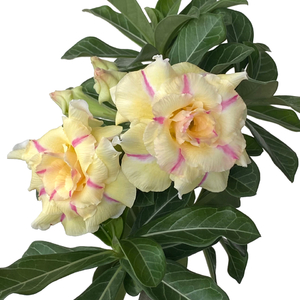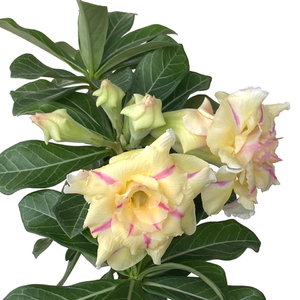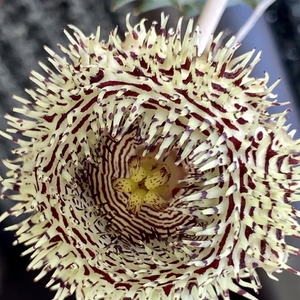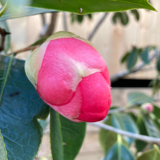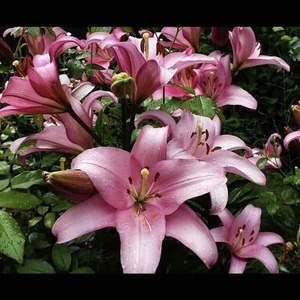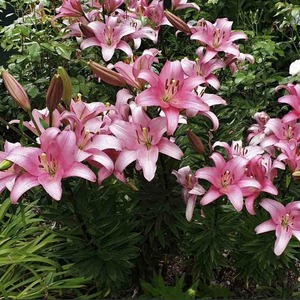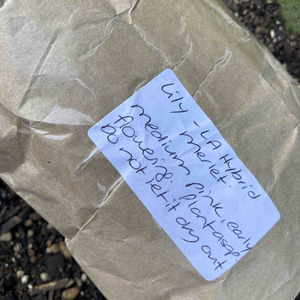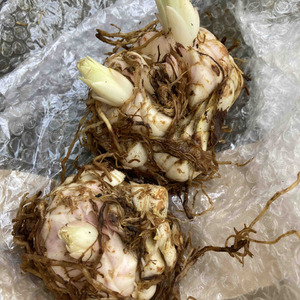
Introduction:
As gardeners, we have the power to make a positive impact on water conservation and promote sustainable practices. By implementing water-efficient techniques, we can maintain a beautiful and thriving garden while reducing water waste. In this article, we will explore various water conservation tips and sustainable gardening practices that will help you create an eco-friendly garden and contribute to the preservation of this precious resource.
Choose Native and Drought-Tolerant Plants:
Selecting native plants that are well-adapted to your region's climate and soil conditions is a key strategy for water conservation in gardening. Native plants have evolved to thrive in their natural environment and are more resilient to local weather patterns, including periods of drought. They have adapted root systems that can access water efficiently and require less supplemental watering. By choosing native plants, you can reduce the need for excessive watering and ensure that your garden remains vibrant and healthy even during dry spells.
Research the native plant species in your area and incorporate them into your garden. Consider their water requirements and choose those that are known to be drought-tolerant. These plants have evolved mechanisms to conserve water, such as deep root systems or waxy coatings on their leaves. By focusing on native and drought-tolerant plants, you can create a garden that is not only low-maintenance but also water-efficient.
Improve Soil Quality:
The quality of your soil plays a crucial role in water conservation. Amending your soil with organic matter, such as compost, mulch, or leaf litter, improves its structure and water-holding capacity. Organic matter helps the soil retain moisture, reducing the need for frequent watering. It also enhances the soil's ability to absorb and distribute water evenly, preventing runoff and water wastage.
Incorporate compost into your soil before planting to increase its water retention capacity. Mulching your garden beds with organic materials like wood chips or straw helps lock in moisture and prevent evaporation. Mulch also acts as an insulating layer, regulating soil temperature and reducing water loss through evaporation. Additionally, consider leaving grass clippings on your lawn or using them as a natural mulch to retain moisture and nourish the soil.
Practice Smart Watering Techniques:
Smart watering techniques are essential for water conservation in gardening. Avoiding water wastage through inefficient watering practices can significantly reduce your water consumption. Instead of using overhead sprinklers that can lead to evaporation and water loss due to wind, opt for drip irrigation systems or soaker hoses. These methods deliver water directly to the root zone, minimizing evaporation and ensuring efficient water uptake by the plants.
Water your garden in the early morning or late afternoon when temperatures are cooler. This allows the water to penetrate the soil effectively before the heat of the day leads to excessive evaporation. Avoid watering during windy conditions as it can cause uneven distribution and water loss.
Regularly monitor soil moisture levels to determine when to water. Use a moisture meter or simply stick your finger into the soil to assess its moisture content. Water only when necessary, ensuring that the soil is moist but not saturated. Overwatering can lead to water waste and create conditions conducive to diseases.
Mulch, Mulch, Mulch:
Mulching is an effective water conservation technique that helps maintain soil moisture and reduces the need for frequent watering. Apply a layer of organic mulch, such as wood chips, straw, or shredded leaves, around your plants and garden beds. Mulch acts as a protective barrier, preventing evaporation and suppressing weed growth, which competes with plants for water.
Mulch helps regulate soil temperature, keeping it cooler in hot weather and warmer in cold weather. This temperature moderation reduces stress on plants and minimizes water loss through evaporation. Additionally, organic mulch breaks down over time, enriching the soil with nutrients and improving its overall health.
Collect and Reuse Rainwater:
Installing rain barrels or cisterns to collect and store rainwater is an excellent way to conserve water in your garden. Position the rain collection system near downspouts to maximize water capture. Rainwater is naturally free of chemicals, making it ideal for watering plants.
Use the collected rainwater to irrigate your garden during dry periods, reducing your reliance on municipal water supplies. Attach a hose or use a watering can to distribute the rainwater efficiently. This practice not only conserves water but also reduces your water bill and lessens the strain on local water sources.
Regular Maintenance and Monitoring:
Regular maintenance and monitoring of your garden are crucial to ensure efficient water use. Regularly inspect your garden for leaks, broken sprinkler heads, or any signs of water wastage. Repair or replace faulty equipment promptly to prevent unnecessary water loss.
Monitor the health of your plants and adjust watering schedules as needed. As plants grow and seasons change, their water requirements may vary. Avoid overwatering, as it can lead to water runoff and waste. Adjust your watering based on the specific needs of each plant, taking into consideration factors such as weather conditions, plant maturity, and soil moisture levels.
Conclusion:
Implementing water conservation practices in gardening is not only beneficial for the environment but also for the health and longevity of your garden. By choosing native and drought-tolerant plants, improving soil quality, practicing smart watering techniques, mulching, collecting and reusing rainwater, and regularly maintaining and monitoring your garden, you can significantly reduce water waste. These sustainable gardening practices will help create a lush and eco-friendly garden that thrives while minimizing water usage. By taking steps to conserve water, gardeners can make a positive impact on the environment and contribute to the preservation of this precious resource for future generations. Let's embrace these water conservation tips and create beautiful, sustainable gardens that are both visually appealing and environmentally responsible.

Introduction
Flower gardening is a rewarding and beautiful hobby that allows you to create colorful and vibrant displays in your outdoor space. If you're a beginner, it's important to start with the basics to ensure your flowers bloom beautifully. In this guide, we will provide you with tips and techniques to help you create a bountiful and stunning flower garden.
Choose the Right Location
Select a location for your flower garden that receives ample sunlight, ideally 6-8 hours per day. Most flowers thrive in sunny spots, although some varieties can tolerate partial shade. Consider the soil type and drainage as well, as different flowers have different soil requirements.
Prepare the Soil
Before planting, prepare the soil by removing any weeds, rocks, or debris. Loosen the soil with a garden fork or tiller and amend it with organic matter such as compost or well-rotted manure. This will provide essential nutrients and improve the soil's structure for healthy plant growth.
Choose the Right Flowers
Select flowers that are suitable for your growing zone and the specific conditions of your garden. Consider factors such as flower colors, heights, and bloom times to create a well-rounded and visually appealing garden. As a beginner, opt for easy-to-grow flowers like marigolds, zinnias, sunflowers, or pansies.
Start with Transplants or Seeds
As a beginner, you can choose to start your flower garden with transplants or seeds. Transplants are young plants that are already started, making them easier to establish. Seeds are more cost-effective but require more time and patience. Follow the instructions on the seed packets or transplant labels for proper planting depth and spacing.
Provide Adequate Water
Water your flowers regularly to ensure they receive adequate moisture. Most flowers prefer consistent watering, so monitor the soil moisture and water when it feels dry to the touch. Avoid overwatering, as it can lead to root rot. Water at the base of the plants to avoid wetting the leaves, which can cause disease.
Mulch and Weed Control
Apply a layer of organic mulch around your flowers to conserve moisture, suppress weeds, and regulate soil temperature. Mulch also adds a neat and finished look to your garden. Regularly check for weeds and remove them promptly, as they compete with your flowers for nutrients and water.
Fertilize as Needed
Some flowers benefit from periodic fertilization to promote healthy growth and abundant blooms. Use a balanced, slow-release fertilizer or organic options. Follow the recommended application rates on the packaging and avoid over-fertilizing, as it can damage the plants.
Deadhead and Prune
Remove spent flowers, a process known as deadheading, to encourage continuous blooming and prevent the plant from expending energy on seed production. Additionally, prune your flowers as needed to maintain their shape and control their size. Pruning also helps improve air circulation and reduce disease risk.
Monitor and Control Pests
Regularly inspect your flowers for pests such as aphids, slugs, or snails. If you notice an infestation, use organic pest control methods or insecticidal soaps to manage the problem. Be mindful of using pesticides, as they can harm beneficial insects and pollinators.
Enjoy and Experiment
Lastly, enjoy the process of flower gardening and don't be afraid to experiment with different flower varieties and combinations. Gardening is a learning experience, and you'll discover what works best for your garden over time. Take the time to appreciate the beauty and fragrance of your blooms and share them with others.
Conclusion
With the right location, proper soil preparation, and care, you can create a stunning and bountiful flower garden. Choose flowers suited for your growing zone, water and fertilize as needed, and maintain a vigilant eye for pests and weeds. Remember to deadhead and prune for continuous blooms and don't be afraid to try new flowers and combinations. Flower gardening is a joyful and fulfilling hobby that allows you to connect with nature and create a vibrant outdoor space.

Growing Your Own Cut Flowers for Beautiful and Sustainable Floral Arrangements
Introduction
Growing your own cut flowers not only allows you to enjoy beautiful blooms, but it also promotes sustainability by reducing the environmental impact of commercially grown flowers. With a little planning and care, you can create stunning and unique floral arrangements straight from your garden. In this guide, we will explore tips and ideas for growing your own cut flowers for beautiful and sustainable floral arrangements.
Plan Your Garden
Before starting your cut flower garden, consider the available space, sunlight, and soil conditions. Choose a location with at least 6-8 hours of direct sunlight per day. Prepare the soil by adding organic matter, such as compost, to improve fertility and drainage. Plan your garden layout, taking into account the height, color, and bloom time of different flowers to ensure a continuous supply of cut flowers throughout the season.
Select Suitable Cut Flowers
Choose flowers that are known for their long vase life and suitability for cutting. Some popular choices include zinnias, sunflowers, cosmos, dahlias, snapdragons, and lisianthus. Consider the bloom time, color palette, and fragrance of the flowers to create visually appealing and diverse arrangements. Additionally, select a mix of annuals and perennials to ensure continuous blooms.
Start from Seeds or Transplants
Decide whether you want to start your cut flowers from seeds or purchase transplants from a nursery. Starting from seeds gives you a wider variety of flower choices and can be more cost-effective. However, it requires additional time and effort. Transplants offer convenience and a head start but may limit your options. Follow the specific planting instructions for each flower variety.
Provide Proper Care
Ensure your cut flowers receive proper care to maximize their growth and vase life. Water them regularly, keeping the soil evenly moist but not waterlogged. Mulch around the plants to conserve moisture and suppress weeds. Monitor for pests and diseases and take appropriate measures to control them. Deadhead spent blooms to encourage more flowers to grow.
Harvest at the Right Time
Harvest your cut flowers at the right time to ensure they last longer in arrangements. Cut flowers in the early morning or late evening when they are fully hydrated. Use sharp, clean pruners or scissors to make a clean cut just above a leaf node or bud. Place the cut flowers immediately in a bucket of water to prevent wilting.
Experiment with Arrangements
Get creative with your floral arrangements by experimenting with different color combinations, textures, and heights. Combine focal flowers, such as dahlias or sunflowers, with fillers like baby's breath or foliage. Consider using complementary foliage, such as ferns or eucalyptus, to add depth and interest. Don't be afraid to mix and match flowers to create unique and visually appealing arrangements.
Preserve and Share
Extend the enjoyment of your cut flowers by preserving them. Dry flowers like lavender, statice, or strawflowers to create long-lasting arrangements or potpourri. Share the beauty of your cut flowers with friends and family by gifting them bouquets or hosting floral arranging workshops.
Practice Sustainability
Promote sustainability in your cut flower garden by using organic fertilizers and natural pest control methods. Avoid the use of harmful chemicals that can harm beneficial insects and pollinators. Consider composting plant waste and using rainwater for irrigation. Reuse vases and floral foam or opt for eco-friendly alternatives.
Conclusion
Growing your own cut flowers not only allows you to enjoy the beauty of fresh blooms but also contributes to sustainability and reduces the environmental impact of commercially grown flowers. By planning your garden, selecting suitable flowers, providing proper care, harvesting at the right time, experimenting with arrangements, preserving flowers, and practicing sustainability, you can create beautiful and eco-friendly floral arrangements straight from your garden. Embrace the joy of growing your own cut flowers and let your creativity blossom.

Introduction
Butterflies, bees, and other pollinators play a crucial role in our ecosystem by helping plants reproduce. Creating a butterfly and pollinator garden not only provides a beautiful and vibrant space but also supports the survival of these beneficial insects. In this article, we will provide you with tips on how to create a haven for butterflies and pollinators in your garden.
1. Plant Nectar-Rich Flowers
- Choose a variety of flowering plants that provide nectar for butterflies and other pollinators. Opt for native plants whenever possible, as they have evolved alongside local insects and are well-suited to their needs. Some examples of nectar-rich flowers include coneflowers, milkweed, lavender, bee balm, and salvia.
- Plant flowers with different bloom times to ensure a continuous nectar supply throughout the growing season. This will attract and support a diverse range of butterflies and pollinators.
- Group flowers of the same species together, as this makes it easier for pollinators to find and access the nectar. Planting in clusters also creates visual impact and makes it more likely for pollinators to visit.
2. Provide Host Plants
- Butterflies have specific host plants on which they lay their eggs, and their caterpillars feed exclusively on these plants. Research which butterfly species are native to your area and provide their specific host plants. For example, monarch butterflies lay their eggs on milkweed plants, while swallowtails prefer plants like parsley or dill.
- Be mindful that host plants may get eaten by caterpillars, so be prepared to accept some leaf damage as part of the natural process. This damage is a sign of a healthy ecosystem and essential for the life cycle of butterflies.
3. Create Shelter and Habitat
- Include a variety of plants with different heights and structures to provide shelter and resting places for butterflies and other beneficial insects. This can include shrubs, tall grasses, and even small trees. These plants offer protection from wind, predators, and extreme temperatures.
- Incorporate features like rock piles or log piles to provide hiding spots and basking areas for butterflies and insects. These elements also contribute to the overall aesthetics of your garden.
4. Avoid Pesticides
- Minimize or eliminate the use of pesticides in your butterfly and pollinator garden. Pesticides can be harmful to beneficial insects and disrupt the delicate balance of your ecosystem. Instead, focus on natural pest control methods, like attracting beneficial insects or handpicking pests.
- If pest problems persist, consider using organic or biological alternatives that target specific pests while sparing beneficial insects.
5. Provide Water Sources
- Create a water source, such as a shallow dish or birdbath, in your garden. Butterflies and pollinators need water for hydration, especially during hot and dry periods. Add a few stones or pebbles to provide landing spots and prevent drowning.
- Ensure the water source is clean and replenished regularly to avoid the risk of disease.
Conclusion
Creating a butterfly and pollinator garden is not only visually appealing but also beneficial for the environment. By planting nectar-rich flowers, providing host plants, creating shelter and habitat, avoiding pesticides, and offering water sources, you can create a haven for beneficial insects in your garden. Embrace the beauty and wonder of butterflies and pollinators while contributing to their conservation and the health of our planet.

Introduction
Gardening is a dynamic and ever-changing process that requires different approaches and techniques depending on the season. To ensure a thriving and beautiful garden throughout the year, it's essential to understand the specific needs of your plants during each season. In this article, we will provide you with seasonal gardening tips to help you plant and care for your garden all year round.
Spring
- Start seeds indoors: In early spring, start seeds indoors for plants that require a longer growing season. This includes vegetables like tomatoes, peppers, and eggplants. Provide them with proper light, warmth, and moisture until it's time to transplant them outdoors.
- Prepare the soil: As the ground thaws, prepare your garden beds by removing any weeds and loosening the soil. Add compost or organic matter to improve soil fertility and drainage.
- Plant cool-season crops: As the weather becomes milder, plant cool-season crops like lettuce, spinach, radishes, and peas. These plants thrive in cooler temperatures and can be harvested before the summer heat arrives.
- Mulching: Apply a layer of mulch around your plants to suppress weeds, retain soil moisture, and regulate soil temperature. Organic mulch like straw, wood chips, or shredded leaves is ideal for this purpose.
Summer
- Watering: With increased temperatures, water your plants deeply and regularly to prevent dehydration. Water early in the morning or late in the evening to minimize evaporation. Consider using drip irrigation or soaker hoses to deliver water directly to the roots.
- Mulching: Continue to mulch your garden beds to conserve moisture and suppress weeds. Mulch helps regulate soil temperature and reduces water loss due to evaporation.
- Pruning and deadheading: Regularly prune and deadhead flowers to encourage new growth and prolong blooming. Remove any diseased or damaged plant parts to prevent the spread of pests or diseases.
- Pest control: Keep an eye out for pests like aphids, caterpillars, or spider mites. Use natural pest control methods or organic insecticides to protect your plants without harming beneficial insects.
Fall
- Plant cool-season crops: In late summer or early fall, plant cool-season crops like carrots, beets, cabbage, and kale. These plants thrive in cooler temperatures and can withstand light frosts.
- Clean up and compost: As plants start to wither, remove spent plants and fallen leaves from your garden beds. Compost healthy plant debris to enrich your soil for the following season.
- Protect against frost: Monitor weather forecasts and protect your more delicate plants from early frosts. Cover them with frost blankets or bring potted plants indoors if necessary.
- Prepare for winter: Trim back perennial plants, protect sensitive plants with burlap or straw, and drain and store garden hoses and watering equipment before winter arrives.
Winter
- Indoor gardening: If you have the space and light, consider starting an indoor garden or growing herbs and small vegetables in pots. This allows you to continue gardening even during the winter months.
- Plan and research: Use the winter months to plan and research for the upcoming gardening season. Explore new plant varieties, design changes, or gardening techniques you want to try in the following year.
- Maintain tools and equipment: Clean and sharpen your gardening tools, organize your supplies, and ensure your equipment is in good working condition. This prepares you for the upcoming gardening tasks in the spring.
- Feed the birds: Provide food and water sources for winter birds by hanging bird feeders and placing birdbaths in your garden. This not only benefits the birds but also adds life and enjoyment to your winter garden.
Conclusion
By following these seasonal gardening tips, you can ensure that your garden remains vibrant and healthy throughout the year. From starting seeds indoors in the spring to protecting your plants from frost in the fall, each season presents unique opportunities and challenges. Embrace the rhythm of the seasons and enjoy the rewards of a well-cared-for garden all year round.

Introduction
Gardening is a fulfilling and rewarding hobby that allows individuals to connect with nature and create beautiful outdoor spaces. To ensure success and efficiency in gardening tasks, it is important for every gardener to have the right tools and equipment. In this article, we will explore the essential tools that every gardener should have in their arsenal.
Hand Trowel
A hand trowel is a versatile tool that every gardener should have. It's perfect for digging small holes, transplanting seedlings, and removing weeds. Look for a hand trowel with a comfortable grip and a sturdy blade.
Pruning Shears
Pruning shears, also known as secateurs, are essential for maintaining the health and shape of your plants. They're ideal for pruning branches, deadheading flowers, and shaping shrubs. Choose pruning shears with sharp blades and a comfortable grip.
Garden Gloves
Garden gloves are a must-have to protect your hands while gardening. They shield your hands from thorns, insects, and dirt. Look for gloves that are durable, breathable, and provide a good grip.
Garden Fork
A garden fork is a versatile tool for any gardener. It's perfect for loosening soil, turning compost, and breaking up clumps. Look for a garden fork with sturdy tines and a comfortable handle.
Garden Rake
A garden rake is an essential tool for maintaining your garden. It helps level soil, remove debris, and spread mulch. Choose a rake with strong and flexible tines that can withstand heavy use.
Watering Can or Hose
Watering is crucial for the health of your plants. Depending on the size of your garden, you can choose between a watering can or a garden hose. A watering can is ideal for smaller gardens or potted plants, while a garden hose with a spray nozzle is more suitable for larger areas.
Garden Spade
A garden spade is a versatile tool that every gardener should own. It's used for digging large holes, edging beds, and turning soil. Look for a spade with a sharp blade and a comfortable handle.
Garden Pruners
Garden pruners are essential for maintaining the shape and health of your plants. They're perfect for cutting and trimming small branches and stems, shaping shrubs, and pruning fruit trees. Choose pruners with sharp blades and a comfortable grip.
Wheelbarrow
A wheelbarrow is a versatile tool for transporting heavy items in your garden. It's great for moving soil, mulch, plants, and other materials. Look for a wheelbarrow with a sturdy frame, a large capacity, and pneumatic tires for easy maneuverability.
Garden Hoe
A garden hoe is a useful tool for cultivating and weeding. It helps keep your garden beds tidy and free from unwanted plants. Look for a hoe with a sharp blade and a comfortable handle.
Garden Sprayer
A garden sprayer is essential for applying fertilizers, pesticides, and other liquid solutions to your plants. It allows for precise and even distribution of chemicals. Choose a garden sprayer with adjustable nozzles and a comfortable handle.
Garden Kneeler
A garden kneeler provides cushioning and support for your knees while working close to the ground. It can also be flipped over and used as a seat. Look for a garden kneeler with a sturdy frame and comfortable padding.
Garden Wire or Twine
Garden wire or twine is essential for supporting and tying up plants. It's perfect for training climbers, securing branches, and creating trellises. Choose wire or twine that is strong and weather-resistant.
Garden Shovel
A garden shovel is a versatile tool for digging, lifting, and moving soil. It's especially useful for larger gardening tasks, such as planting trees or creating new beds. Look for a shovel with a sturdy blade and a comfortable handle.
Garden Sprinkler
A garden sprinkler is a convenient tool for watering larger areas of your garden. It helps ensure even distribution of water and can be adjusted to suit your specific needs. Look for a sprinkler with adjustable settings and durable construction.
Investing in high-quality tools is essential for any gardener. By choosing the right tools, you can make your gardening tasks more efficient and achieve better results in your garden.
Remember to take care of your tools by cleaning andmaintaining them regularly. This will prolong their lifespan and ensure optimal performance. Additionally, always prioritize safety while using gardening tools and equipment. Wear appropriate protective gear, such as gloves and safety glasses, and follow the manufacturer's instructions for each tool.
In conclusion, these are some of the essential tools and equipment that every gardener should have. From hand trowels and pruning shears to garden gloves and wheelbarrows, these tools will help you tackle various gardening tasks with ease. Invest in high-quality tools that are comfortable to use and built to last. With the right tools in hand, you'll be well-equipped to create a beautiful and thriving garden.

Introduction
Creating a beautiful flower garden doesn't have to be time-consuming or high maintenance. With some careful planning and thoughtful choices, you can design a garden that bursts with color and life while requiring minimal effort to maintain. In this article, we will explore some tips for creating a beautiful and low-maintenance flower garden.
1. Choose the Right Plants
Selecting the right plants is crucial for a low-maintenance flower garden. Opt for perennial flowers that come back year after year, as they require less effort to maintain compared to annuals. Look for native or drought-tolerant plants that are well-suited to your climate and soil conditions. These plants have adapted to the local environment and tend to be more resilient, requiring less water and care. Additionally, consider planting a variety of flowers that bloom at different times throughout the year to ensure continuous color in your garden.
2. Plan for Easy Maintenance
When designing your flower garden, incorporate elements that make maintenance tasks easier. Create wide pathways between flower beds to allow easy access for watering, weeding, and deadheading. Mulch the beds with organic materials like wood chips or straw to suppress weeds, retain moisture, and reduce the need for frequent watering. Group plants with similar watering and care requirements together, so you can easily tend to them without affecting the rest of the garden.
3. Install an Irrigation System
Installing an irrigation system can significantly reduce the time and effort required to water your flower garden. Drip irrigation systems are efficient and deliver water directly to the plants' roots, minimizing water loss through evaporation. Set up a timer to automate the watering schedule, ensuring that your flowers receive the right amount of water without over or under watering. This not only saves you time but also conserves water by avoiding unnecessary wastage.
4. Use Mulch and Weed Control
Mulching not only helps with moisture retention but also suppresses weed growth. Apply a layer of mulch around your flower beds to prevent weeds from sprouting and competing with your flowers for nutrients and water. Consider using organic mulch like wood chips, straw, or shredded leaves, as they gradually break down and enrich the soil. Additionally, weed regularly to prevent them from overtaking your flower garden. Pull weeds when they are small to make the task easier and less time-consuming.
5. Deadhead and Prune Regularly
Deadheading, or removing spent flowers, not only keeps your flower garden tidy but also encourages plants to produce more blooms. Regular deadheading redirects the plant's energy towards new growth and prolongs the blooming period. Additionally, prune your plants as needed to remove dead or damaged branches and promote healthy growth. Pruning also helps maintain the desired shape and size of your flower garden, preventing overcrowding and improving air circulation.
6. Consider Low-Maintenance Design Elements
Incorporate low-maintenance design elements into your flower garden to reduce the need for constant upkeep. Use perennial groundcovers or mulch to fill empty spaces and minimize weed growth. Integrate decorative rocks or gravel pathways to add visual interest and reduce the need for mowing or edging. Consider adding a focal point, such as a sculpture or a birdbath, to draw attention and create a focal point that doesn't require much maintenance.
7. Regularly Monitor and Control Pests
Keep a close eye on your flower garden and promptly address any pest problems. Regularly inspect your plants for signs of pests or diseases, such as chewed leaves or discoloration. If detected, identify the specific pest and use targeted methods for control, such as handpicking or applying organic insecticides. Encourage natural predators like ladybugs or birds to help control pest populations.
Conclusion
Creating a beautiful and low-maintenance flower garden is achievable with the right plants, thoughtful design, and regular upkeep. By selecting the right plants, planning for easy maintenance, installing an irrigation system, using mulch and weed control, deadheading and pruning regularly, considering low-maintenance design elements, and monitoring and controlling pests, you can enjoy a stunning garden without sacrificing a lot of time and effort. With these tips, your flower garden will become a vibrant and inviting space that requires minimal maintenance, allowing you to sit back, relax, and enjoy the beauty of nature.

Love and marriage are beautiful unions that bring two people together, but they also entail merging two separate lives, including their financial realities. The interplay between money and relationships can be both enriching and challenging. Open and honest communication, mutual understanding, and a shared approach to finances are essential for navigating the financial aspect of love and marriage. In this article, we'll explore the significance of financial compatibility, ways to manage finances as a couple, and how to overcome common financial challenges that arise within relationships.
The Significance of Financial Compatibility
Before delving into joint financial management, it's crucial to understand each other's financial values, goals, and habits. Financial compatibility doesn't mean having the same income or spending habits, but rather sharing common ground when it comes to financial priorities and attitudes. Openly discussing money early in the relationship can help prevent misunderstandings later on. Reflect on questions such as:- How do you view spending and saving?
- What are your short-term and long-term financial goals?
- Do you have any outstanding debts or financial commitments?
- How do you envision sharing financial responsibilities in the relationship?
Communication is Key
Open and honest communication is the foundation of any successful relationship, especially when it comes to finances. Regularly schedule discussions about money matters to ensure both partners are on the same page. Be ready to listen and approach these conversations with sensitivity. Share your financial aspirations and concerns, and be receptive to your partner's perspective. Constructive conversations can strengthen your bond and create a sense of teamwork in managing your finances.Establishing a Joint Financial Approach
When entering into a marriage or long-term partnership, it's important to decide how you'll manage your finances together. There are various approaches you can consider:- Joint Accounts: Combining all income and expenses into shared accounts fosters transparency and simplifies financial management. It requires open communication and joint decision-making for all expenditures.
- Proportional Contributions: Partners contribute to joint expenses in proportion to their incomes. This approach can provide a sense of fairness and accommodate income disparities.
- Yours, Mine, Ours: Maintain separate accounts for personal spending while also contributing to a joint account for shared expenses. This approach offers both autonomy and collaboration.
Choose the approach that aligns best with your financial values and dynamics as a couple.
Setting Financial Goals Together
Establishing common financial goals can solidify your partnership and create a sense of shared purpose. Whether it's saving for a down payment on a house, planning for children's education, or saving for retirement, working towards shared goals encourages collaboration and compromise. Set clear, achievable goals and outline the steps required to accomplish them. Regularly review your progress and celebrate milestones together.Creating a Budget as a Couple
A budget is an invaluable tool for managing finances as a couple. Collaboratively create a budget that outlines your combined income, shared expenses, and individual discretionary spending. Allocate funds for savings, investments, debt repayment, and fun activities. To make sure you're on track, examine your budget frequently and make necessary adjustments. The budgeting process can reinforce your financial teamwork and strengthen your relationship.Navigating Financial Challenges
Financial challenges are an inevitable part of life, but how you handle them as a couple can make all the difference. During times of financial stress, maintain open lines of communication and work together to find solutions. Prioritize addressing urgent needs and make joint decisions about adjustments to your spending and savings plans. Tackling challenges as a united front can reduce stress and prevent potential conflicts.Maintain Autonomy and Respect
While joint financial management is important, maintaining individual financial autonomy is equally crucial. Each partner should have some personal financial independence for discretionary spending. Respect each other's financial decisions and avoid judgment. Establishing a balance between joint financial responsibilities and personal autonomy contributes to a harmonious relationship.Regular Financial Check-Ins
The way you make money and how you live are both constantly changing. Schedule regular financial check-ins to assess your progress, discuss any changes in income or expenses, and realign your goals if necessary. These check-ins can help prevent surprises and ensure that you're both moving forward together toward your financial aspirations.Conclusion
Navigating the intricate relationship between money and love requires patience, understanding, and active communication. By prioritizing open conversations about financial values and goals, establishing a joint financial approach, creating shared budgets, and respecting each other's autonomy, you can forge a strong financial partnership that supports the longevity of your relationship. Remember, it's not about having identical financial profiles, but rather about working together as a team to build a secure and harmonious future that aligns with your collective dreams.
Backpacking through Southeast Asia can be an unforgettable experience for any traveler. With its beautiful beaches, lush jungles, rich culture, and delicious food, it’s no wonder why this region has become a popular destination for backpackers from all over the world. However, planning a trip can be overwhelming, especially for those who are new to backpacking or unfamiliar with the area. In this beginner’s guide, we will provide you with some tips and tricks to help you plan a successful backpacking trip through Southeast Asia.
Choose Your Route
The first step in planning your backpacking trip through Southeast Asia is to decide on your route. While it may be tempting to try to see everything, it’s important to be realistic about the amount of time and budget you have. A common backpacking route through Southeast Asia includes Thailand, Cambodia, Vietnam, and Laos. These countries are well-connected by bus and train routes and offer a variety of attractions and experiences.
Other popular destinations in the region include Indonesia, Malaysia, and the Philippines. Keep in mind that some countries may require a visa, so make sure to research the entry requirements before you go.
Pack Light
When it comes to backpacking, less is definitely more. You’ll want to pack light, as you’ll be carrying everything on your back for long periods of time. Stick to the essentials, such as a few changes of clothes, a good pair of walking shoes, a waterproof jacket, a travel towel, and a basic first aid kit. Don’t forget to pack sunscreen and insect repellent, as these can be expensive and hard to find in some areas.
It’s also a good idea to invest in a quality backpack that is comfortable to wear and has enough space to hold your belongings. Look for a backpack with a hip belt and padded straps to help distribute the weight evenly.
Stay in Hostels
One of the best ways to save money while backpacking through Southeast Asia is to stay in hostels. Hostels offer budget-friendly accommodations and are a great way to meet other travelers. Many hostels also offer tours and activities, making it easy to explore the area and make new friends.
When choosing a hostel, make sure to read reviews and check the amenities. Look for hostels that offer free breakfast, Wi-Fi, and lockers to keep your belongings safe. It’s also a good idea to bring earplugs and an eye mask, as some hostels can be noisy and bright.
Try the Local Food
One of the best things about backpacking through Southeast Asia is the food. From street food to local markets, there are endless opportunities to try new dishes and flavors. Don’t be afraid to step out of your comfort zone and try something new. Some popular dishes to try include Pad Thai, Banh Mi, and Pho.
When trying street food, make sure to choose stalls that are busy and have a high turnover of food. This ensures that the food is fresh and safe to eat. It’s also a good idea to carry hand sanitizer and avoid drinking tap water, as this can cause stomach problems.
Be Respectful
As a backpacker, it’s important to be respectful of the local culture and customs. Take the time to learn about the local traditions and customs before you go. Dress appropriately and avoid behavior that may be considered disrespectful, such as public displays of affection or excessive drinking.
It’s also important to be aware of the environmental impact of your trip. Avoid littering and opt for eco-friendly activities, such as hiking or volunteering with local conservation projects.
Stay Safe
While backpacking through Southeast Asia can be an incredible adventure, it’s important to stay safe. Be aware of your surroundings and avoid walking alone at night. Keep your belongings close and avoid carrying large amounts of cash. It’s also a good idea to register with your embassy or consulate and keep a copy of your passport and travel documents in a safe place.
When it comes to transportation, opt for reputable companies and avoid taking risks, such as riding on the back of a motorbike without a helmet. It’s also a good idea to purchase travel insurance before you go, as this can help protect you in case of unexpected accidents or emergencies.
Conclusion
Backpacking through Southeast Asia can be an incredible experience for any traveler. By following these tips and tricks, you can help ensure a safe and enjoyable trip. Remember to choose your route wisely, pack light, stay in hostels, try the local food, be respectful, and stay safe. With a little bit of planning and preparation, you can create unforgettable memories and have the trip of a lifetime.

Care for Yoshino Cherry Trees
Before starting what may be a highly gratifying project, you should be aware that yoshino cherry trees need considerable attention. Maintaining cherry trees requires a lot of labor, but it is worthwhile since these trees are so beautiful. The labor will be in maintaining your tree's water supply, making sure it's healthy and free of pests, and trimming it to keep it looking good for as long as feasible.
Knowing just where to plant your tree and the circumstances that will make that location the classic "Goldilocks" zone may help you cut down on some of your care. Don't allow a little more work stop you from using this magnificent species in your landscaping plan. Read the material below at your own pace, and keep in mind that trees are forgiving.
Light
Your Yoshino cherry will need two things that are essential if you want to produce the most stunning spring display: plenty of light and consistent hydration. Giving your tree at least six hours of direct sunshine each day will not only ensure that it grows and thrives, but it will also give it the greatest chance of producing an abundance of lovely blossoms in the spring.
Surprisingly, Prunus yedoensis may thrive in a variety of soil types as long as the soil is moist and has the ability to hold onto some moisture without becoming permanently wet. You may do your own soil test at home, but the ideal soil would have a pH of 6.5 to 7, be average in texture, and drain well. Consider putting mulch around the base of your tree and out to the dripline to assist your soil retain more moisture. It shouldn't touch the trunk and should be buried no deeper than three inches. It won't degrade rapidly if you use a good organic hardwood mulch, which will also reduce how often you need to mulch.
Water
For your tree to remain healthy and beautiful, it must get proper irrigation. Yoshino cherries need a lot of water because of their rapid growth.
Watering it once a week in normal weather or twice a week in really dry weather for the first two seasons after planting must be at the top of the list of gardening duties if the plant is young and needs to establish itself.
After the first two growing seasons, water your tree each two weeks using a soaker hose (you may make one yourself if you don't have one). Ten gallons per inch of trunk diameter, as measured by caliper, is the "usual" rate of watering. Don't water the foliage; water the roots. If there are drought conditions, water the tree once a week in the same way, keeping in mind that prolonged soaks are preferable than more frequent, shallow waterings.
Thermodynamics and Humidity
Due to its tolerance of warm conditions, this particular cherry hybrid is quite well-liked. It is not surprising that Yoshino cherries or its varieties make up 73% of all the cherry trees in Washington, D.C.'s Tidal Basin, according to the United States National Park Service. It is one of the few cherry trees in the area that can withstand the heat and humidity. While it does well in heat and humidity, it struggles in drought, necessitating the need to arrange additional watering during these times.
Despite your instinct to feed the fertilizer Prunus yedoensis more in order for it to produce more flowers, it is not a tree that is a huge feeder. Test your soil for any inadequacies before adding any fertilizer to see if an application is even necessary. Applying fertilizer will likely result in more foliage being produced than fruit or flowers, which is the exact opposite of what you desire.
Yoshino Cherry Tree Types
Yoshino cherry trees come in many different kinds and dozens of cultivars. The number of cultivars and variations increases into the hundreds when you take into account the varieties and cultivars of its parent plants. A cultivar of this hybrid would be sought after due to flower shape, color, or arrangement. The quantity of blooms in a cluster may often vary from cultivar to cultivar, affecting the appearance of the tree as a whole. Of course, this also applies to shape and color. You may get flowers in a variety of colors, from delicate pink to a light pink that fades to white as the season goes on, depending on the cultivar. Four of the most well-known Yoshino cherry varieties are listed below:
1. The cultivar Prunus x yedoensis "Akebono" has a circular crown and pink blossoms that eventually become white.
2. Prunus x yedoensis 'Afterglow' is a cultivar that is becoming more well-known for its deep pink, long-lasting flowers.
3. The cultivar Prunus x yedoensis 'Shidare Yoshino' has white blossoms and a weeping shape.
4. The fast-growing cultivar Prunus x yedoensis "Morioka-pendula" has a severely weeping shape.
Pruning
Your cherry tree has to be pruned to create shape. The branches shouldn't be thinned to increase light penetration. Ornamental plants' bark is very delicate and susceptible to sunlight. Furthermore, trimming to allow for direct light on the trunk promotes sprout development, which is unsightly and hard to stop once it starts.
Depending on the cultivar, you might need to thin out suckers or clip the bottoms of weeping branches to clean up the area surrounding the trunk. Every year, look for weak, dead, damaged, or dying limbs on the tree and cut them off before the spring. When your tree becomes too large for you to properly execute these chores without a ladder, you should enlist the help of a licensed arborist.
Propagation
Grafting, air layering, and softwood cuttings are the three techniques for growing Yoshino cherries. For softwood cuttings to successfully root on hardwood cuttings during grafting, the cutting must be chosen at exactly the proper moment. Cherry cuttings will not root on hardwood cuttings. Due to these factors, air layering is your best choice since it is the simplest. Additionally, after you have rooted plant material, you may plant your tree and have a fully grown clone of the original tree shortly after.
You don't need a lot of equipment or supplies to air layer. You'll also need some sphagnum moss, plastic wrap, grafting tape, and a sharp tool like a grafting knife. You will air layer by:
Remove the bark from the branch down to the cambium by making two parallel incisions around it that are at least 3/8 inch thick and 2 inches apart. This will prevent your final cutting from collecting nutrients or water.
Wrap the exposed wood with wet sphagnum moss, cover it with plastic wrap, and securely tape the ends to prevent any water from leaking in or out.
Wait for a rootball to form and periodically inspect the wrapped area for evidence that roots are growing. When your new tree is established, take off the plastic, cut it below the root ball, and plant it right away.
How to Make a Tree Bloom
A blossoming tree may not flower for a variety of reasons. First of all, avoid using the tried-and-true method of fertilizing! It's possible that the fertilizer you're applying to attempt to entice some blossoms may make them reticent and direct more nutrients into the foliage rather than the flowers.
Now that you've hopefully stored the fertilizer, check at some additional (likelier) reasons.
When were the trees planted? Your tree may be too young to blossom if you just planted it. A mature tree is required for flowering. Keep in mind that a tree's reproductive system is represented by its blossoms.
How long ago was the last frost? The cold this year could have killed off any buds that were on the tree.
Does your tree receive enough sunlight or water? Yoshino cherry trees need these two qualities in order to blossom and seem their best. This is probably why you are getting some blooms but not many.
Test your soil lastly. After eliminating the three more probable reasons, examine your soil to determine if it has any deficiencies.
Typical Pests and Plant Illnesses
Constantly checking your tree for insects and illness is one of the continuing duties you will need to carry out since the Yoshino cherry is particularly susceptible to both. When you discover a pest has come in, it's a good idea to keep an eye out even if the insects often won't create too many significant problems. Aphids, scale, borers, caterpillars, and Japanese beetles are likely to attack your trees.
The illnesses that might affect your tree are more concerning, but the best course of action is to spot any early symptoms. Leaf spot and leaf curl are most prevalent on Yoshino cherries. A fungicide may be used to treat leaf spot, and the affected plant material has to be destroyed. Leaf curl must also be removed by pruning.

The optimum time to plant chamomile is in the spring, either from seed or young plants. Both chamomile varieties are fast-growing, reaching full bloom in approximately 10 weeks. German chamomile is more often used to make tea, whereas Roman chamomile is frequently used as a ground cover or creeping plant to soften the edges of a stone wall or pathway.
With Chamomile
Although German chamomile (Matricaria chamomilla) is an annual plant, you could mistake it for a perennial because of how easily it self-seeds, similar to Roman chamomile (Chamaemelum nobile). Both are simple to maintain in a garden and only need a few things to flourish. Roman chamomile wins the prize for having more fragrant blossoms, but German chamomile produces more flowers overall.
Being too floppy and inconsequential when coupled with more formal and intimidating plants makes chamomile a poor choice for bedding plants. However, it may be used as an underplanting in a vegetable or herb garden, to soften the edges of a rock wall, and it works well in pots.
When the chamomile flowers are completely open, harvest them. You may use them either fresh or dried. When the flowers and leaves are dried, keep them in an airtight container in a cold, dark location (or frozen). Simply pick the blooms if you discover that the leaves make your tea too bitter.
Light
German and Roman chamomile both thrive in both full and partial shade. Although in warmer climes a little partial shade is preferable (particularly in the hot afternoon hours to prevent scorching the delicate blossoms), the plants will flower best in full sun. Usually, quicker growth results from more sunlight, however this plant grows quickly by nature.
Soil When planted in rich, organic soil, both varieties of chamomile will blossom at their finest. They can endure lesser combinations, although they often have floppier stems as a result. The pH of the soil is not important to chamomile; it prefers a neutral range of between 5.6 and 7.5.
Water
Young chamomile plants need approximately an inch of water each week. The plants are drought resistant as they mature and become established. The ideal practice is to let plants dry out in between light waterings. However, chamomile will benefit from a little extra moisture in severely hot temperatures.
Thermodynamics and Humidity
Chamomile can grow in any summer climate with temperatures below 100 degrees Fahrenheit. It enjoys temperatures between 60 and 68 degrees Fahrenheit as its preferred range. It can tolerate drought and does well in very humid environments.
Fertilizer
Chamomile doesn't need fertilizer to grow; it also doesn't require special nourishment to do so.
How to Plant Chamomile Seeds
Starting chamomile plants from seed is simple. Six weeks before the final anticipated frost, sow seeds inside. Spread the seeds out and firmly push them into the ground, but do not cover the chamomile seeds with earth since they need sunshine to sprout. They should germinate in seven to fourteen days if you water often. Although you'll get greater germination if you direct-seed chamomile outside in the autumn and allow the seed stratify over the winter for a spring harvest, you can also do this inside.
Typical Pests
The majority of insects avoid chamomile. Use of chamomile to keep cucumber pests away. Aphids and thrips, however, may sometimes be an issue. Both may be removed from the plant by washing it or by using insecticidal soap.
The Best Way to Make Chamomile Bloom
The tiny, white petals and golden centers of chamomile flowers give them the appearance of little daisies. The spring and summer seasons see the flowers blossom, which have a lovely, herbaceous scent. Giving your chamomile direct, full light is the greatest method to encourage it to blossom; if it is in shadow, it may not. Other than that, this plant is really simple; neither fertilizer nor deadheading are required.
Problems Often Found With Chamomile
Both indoors and outside, chamomile is a plant that is simple to produce and encounters few issues. But sometimes it need some tender loving care.
Blotches of brown on the leaves
This might indicate a number of fungus-related plant diseases, including botrytis blight. Your plant may be fixed by applying some fungicidal oil to the problem.
Leaves Fall Off and Turn Brown
Your chamomile may be receiving too much water if this is happening to it. Reduce the water use and assess the results.

Kale and decorative cabbage are biennials of the chilly season. This implies that they develop their vegetative leaves in the first year and then, the following year, put up blossoms, resulting in the production of seeds before the plant perishes. These quickly expanding plants are, however, often cultivated as annuals for their colorful leaves. They are planted from nursery starts in the autumn or the early spring and then taken out of the garden after the season's display is through.
Care for Decorative Cabbage or Kale
Although they may be vulnerable to some of the same pests that afflict other types of the cabbage family, they are simple plants to cultivate in the majority of sunny regions. If you attempt to grow them in the heat of summer, you may be dissatisfied by how quickly they bolt and go to seed since they favor cool-weather conditions. If they are exposed to chilly, even frigid circumstances, they will produce their most stunning hue.
Light
These plants like growing in full sunlight. However, midday shade is best when cultivated in warmer areas.
These plants thrive in loamy, organically rich soil that drains well. The ideal soil pH range for both cabbage and kale is between 5.5 and 6.5.
Water
Water the plants often; they want continuously damp but not saturated soil. It's time to water if the top inch of soil is dry. You probably won't need to water anything at all if your climate has consistent rainfall. But if there is a dry period, be ready to provide more water. For these plants, 1 inch of water (from irrigation or rainfall) is ideal, but try to avoid overwatering.
Thermodynamics and Humidity
Kale and ornamental cabbage need a good cold from a frost in order to fully develop their hues. They may persist all winter long, although the weather greatly affects how they look. They will flee if it is hot and there is a lot of sunlight (send up a flower stalk and go to seed). Additionally, if it's really rainy and stormy, the plants will deteriorate fast. As long as the temperature is more than 5 degrees Fahrenheit, they can endure. A sudden change in temperature, however, may harm or even kill plants.
These plants normally don't have a problem with humidity. But if the air is stagnant and the weather is moist, plants may get infected with fungus, which often manifests as patches on the leaves. 1
Fertilizer
Use a balanced fertilizer only at planting time to fertilize ornamental kale and cabbage. Avoid fertilizing them while they are still developing to prevent color loss and legginess.
Types of Kale and Cabbage for Decoration
There isn't a lot of diversity available unless you are producing decorative cabbage and kale for a living. The majority of seed packs simply say "ornamental cabbage." Therefore, it is advisable to concentrate on a color scheme that you find appealing. Flowering kale varieties may be categorized as either having "feather-leaved cultivars" or "fringed-leaved cultivars" (those with ruffled leaves) (those with finely serrated leaves).
Several well-liked types include:
"Chidori" decorative kale has leaves that are deep magenta, milky white, or purple and has highly curled leaf margins.
The 'Color Up' decorative cabbage is upright-growing, with green leaves that have white, pink, or fuchsia cores.
The decorative cabbage variety "Osaka" features broad, smooth leaves with pink, red, or white centers. Normally, the plant doesn't grow much.
'Peacock' decorative kale: With loose growth and sharply serrated leaves in shades of red, purple, or white, this plant resembles its food kale relatives more.
The flattened form of the decorative cabbage from the "Pigeon" series features a red or white core.
Growing Ornamental Kale and Cabbage
The second season, when these biennial plants blossom and set seed, is often when they are abandoned. However, if you do let them stay so they may generate seeds, you can harvest the seeds from the fading flower heads and replant them at the right planting time. The seeds may be frozen to keep them fresh for subsequent sowing.
How to Grow Kale and Cabbage From Seeds for Decoration
About eight weeks before to the final anticipated date of frost, cabbage or kale seeds should be planted inside for spring growth. Start the seeds for the autumn show around July 1 and transplant the seedlings into the garden in the middle of August.
Start the seeds inside in little pots with a seed-starting mixture inside. The seeds should be sown in the soil at a depth of approximately 1/4 inch in a light area with a temperature of around 70 degrees Fahrenheit. The potted seedlings may be put outside after the final spring frost, or in mid to late August for fall/winter display. The seedlings will emerge in 10 to 21 days.
Planting and replanting decorative kale and cabbage
Ornamental kale or cabbages sometimes seem more natural when planted in pots as opposed to being dispersed around a garden if you just want one or two plants. Similar to how potted pansies are used in the spring and potted chrysanthemums in the autumn, they may make lovely seasonal potted plants.
Use an all-purpose potting mix and a container with plenty of drainage holes. You usually won't need to bother about repotting nursery plants into a larger container since they probably won't become much bigger than they are when you obtain them.
Overwintering
Kale and ornamental cabbages are often not permitted to overwinter since, when they put up flower stalks in their second year, these biennial plants become fairly unsightly. However, because the leaf rosettes stay lovely until repeatedly strong frosts ultimately force them to wilt, the majority of gardeners will keep them in place far throughout the winter.
Typical Pests and Plant Illnesses
Ornamental cabbages and kale are very vulnerable to cabbage worms, cabbage loopers, flea beetles, caterpillars, thrips, slugs, and aphids, much like many culinary plants in the Brassica genus.
Many of these pests may be removed with hard water sprays. These pests may be controlled using a range of pesticide dusts or horticultural oils made for crops. Kale and cabbage grown in pots may be more resistant to pests and illnesses than those grown in the ground.
Leaf spots, blackleg, black rot, and yellows are examples of common disease issues.
1 When the weather is moist, they are most likely to happen.
Common Issues With Kale and Ornamental Cabbage
Although they are employed as ornamentals, these plants are really vegetables and are thus prone to many common vegetable illnesses and animals that like eating food. You can notice the following significant issues:
Leaves with Holes
The many feeding insects that adore all Brassicaceae family members probably definitely caused this, at least in part. Kale and cabbages are a favorite food of cabbage worms, many other caterpillars, snails, and aphids. Since these plants are often not eaten, you may use more chemicals to manage the pests by using a range of insecticidal soaps or chemical sprays.
Leaves with Black or Yellow Spots
In most cases, spots on leaves rather than holes indicate a bacterial or fungal illness. In wet weather, they are more prone to occur. Keeping proper air circulation might lessen the risk of contracting certain illnesses. If used early enough, fungicides may aid in the treatment of fungal illnesses.
There are ugly tall stalks.
Bolting, or going to bloom, is the abrupt appearance of a sparse and quite unattractive stem on otherwise beautiful cabbage or kale. Its time as an attractive plant is now finished, but if you wish to collect the seeds to start new plants, you may let it grow further.




